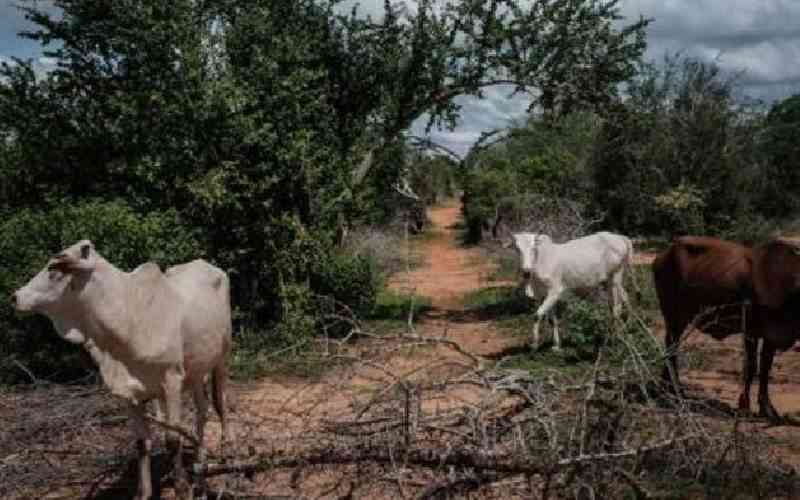
Within the sweeping landscapes of the Tsavo Ecosystem in Kenya’s Taita Taveta County, a profound shift is underway as several ranches opt to transform themselves into conservancies.
This transformation is not only driven by a shared commitment to conservation and sustainable land use but also championed by local communities who actively participate in protecting the region’s rich biodiversity and fostering economic growth.
The Tsavo Ecosystem, renowned for its diverse flora and fauna, has faced challenges from human-wildlife conflicts and habitat degradation.
To counter these issues and maintain a harmonious coexistence between wildlife and local communities, ranch owners are voluntarily converting their land into conservancies.
Hand in hand
Kasigau Ranch, known for its historical significance and breathtaking landscapes currently with over 3,000 members covers an area of 52,305 acres and is one of the ranches becoming a conservancy.
The manager, Steve Mwaisaka, states, “We realised that conservation and responsible land management can go hand in hand. By creating a conservancy, we can actively participate in protecting our natural heritage while also supporting the local community.”
Mwaisaka explains, “Through our conservation efforts, we have been able to secure carbon credits, which are essentially financial rewards for sequestering carbon dioxide from the atmosphere through our forest protection and reforestation projects. This income has been instrumental in supporting our conservation initiatives and providing socio-economic benefits to the community.”
Revenue from carbon credits of about Sh40 Million per year has been utilised to improve infrastructure in the conservancy, expand education through bursaries, and water projects and establish sustainable businesses that benefit local communities.
Additionally, these funds have empowered conservancy officials to invest further in anti-poaching measures and advanced wildlife monitoring technologies, leading to improved protection for endangered species.
Mgeno Conservancy is leading the charge in adapting to climate change and fostering community coexistence. Formerly a thriving ranch, the conservancy faced challenges due to drought and mismanagement, prompting a transition to small-scale goat farming. Today, the conservancy manages over 2,000 heads of cattle, focusing on breeding and fattening stock.

According to Arnold Msheshe in charge of livestock and Agriculture Climate change’s impact has been undeniable, with erratic weather patterns and prolonged droughts forcing the conservancy to rethink its livestock management strategies.
“To combat these challenges, they implemented destocking initiatives, reducing the cattle population by about 100 cows per month to ensure adequate fodder during scarcity,” Msheshe said.
Pasture development became a top priority, with the conservancy actively seeking water sources within its vast 53,000-acre territory.
Employing grazing blocks, they strategically rotate their cattle, allowing pastures to regenerate and minimizing overgrazing in the course of the year the conservancy hosts more than 350 elephants.
He revealed by prioritising coexistence over conflict, the conservancy has significantly reduced human-wildlife interactions and no longer seeks compensation for livestock losses caused by wildlife encounters. This approach fosters responsible land use and enhances conservation efforts.
Lumo Conservancy is another prime example of a ranch turning towards conservation, guided by community engagement. The manager of the conservancy, Joseph Mzozo, emphasises, “Our goal is to protect endangered species, such as elephants and rhinos, and provide a safe haven for all wildlife. This conversion allows us to collaborate with wildlife authorities and conservation organisations, amplifying our impact.”
Sustainable livelihoods
Through community-driven conservation initiatives, Lumo Conservancy has established programmes that promote sustainable livelihoods for local residents.
Initiatives such as eco-friendly agriculture and ecotourism ventures have not only empowered the community economically but also serve as alternatives to practices that may have previously posed a threat to wildlife and their habitats.
Besides the numerous benefits that conservancies bring to the region, there is another significant advantage that has caught the attention of conservancy officials and stakeholders alike -- carbon credit funds.
With the international focus on combating climate change, conservancies like Kasigau Conservancy are capitalising on this opportunity by participating in carbon credit schemes.